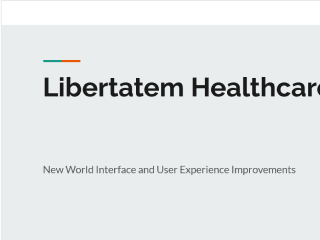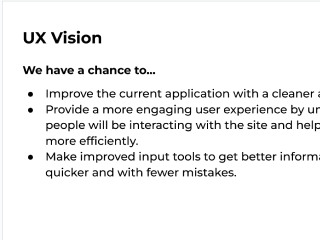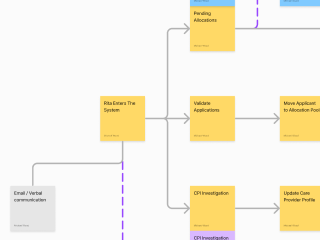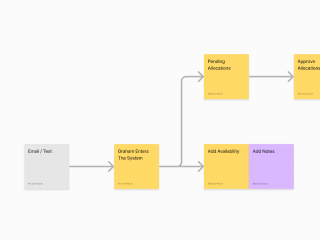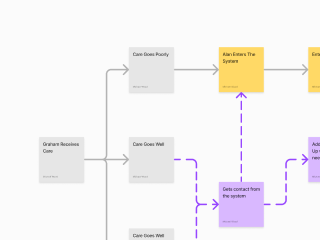Brief
Design a (mostly) in-house application to manage a Private Healthcare Company, the Healthcare Providers helping people, and allow a feedback mechanism for Service Users.
My Contributions
- Research & Discover
- Information Architecture
- Product Design
- Visual Design
- Interaction Design
- Front End Development
Project Team
- Michael Wood User Experience & Front End Development
- Andy Back End Development
- Tariq Additional Development
Process Overview
- Discover
- Research
- Analysis
- Wireframing
- Prototyping
- Front End Development
- Back End Development
- Testing
- Refinement
- Testing
- Refinement
Research & Discover
I identified three main groups through interviewing and focus groups, which - because of the Pandemic - were largely conducted online. These three groups created a virtuous circle around the business functions of providing healthcare and were well served by the business, with improvements having manifest improvements within people's experiences.
The experience of those people came out in stories which showed the empathy which rooted the business - Healthcare Providers wanted to provide the best care, Care Administrators wanted to serve the Healthcare Providers as best they could - powered the project.
Alongside those stories, I conducted Systems Analysis of how people used the applications and the problems they faced on a regular basis. This came in the form of data analysis and journey mapping to identify where problems arouse and how those problems were circumvented.
Key Insights
Quicker validation loops for Healthcare Providers would allow those Care Administrators to assign those Healthcare Providers to begin Healthcare sooner, which would allow for more responsive coverage for Service Users, improving satisfaction and effectiveness.
A more useful system for Care Administrators to assign Healthcare Providers would allow for more specific healthcare for Service Users on the basis of their reported needs, increasing satisfaction and effectiveness.
Problem Statement
Healthcare Providers are not able to register easily, which is a problem because it prevents care from being given to Service Users, leading to a delay from request for care to providing that service. This is a problem for Care Administrators who have resources they cannot assign, and Service Users who require care.
Care Administrators are not able to use the system well because it was built in parts, and those parts often are inconsistent. This is a problem because the difficult system presents Care Administrators making good management decisions, leading to lower customer service and satisfaction. This is also a problem for Healthcare Providers and Service Users who often use non-standard devices the system will not work on, like iPhones.
Care Administrators find it time-consuming to assign Healthcare Providers to Service Users, having to cross-reference information about the Service User in emails and other files. This is a problem because it meant that the knowledge of Care Administrators was not contained within the system and new Care Administrators and Healthcare Providers using the system would lose knowledge, and so there could be a drop in service levels and satisfaction.
Ideation Phase
Working with Care Administrators I mapped out the tasks which they looked to achieve, and with them ranked the priorities of the parts of those tasks, to create an information structure which drove the layout of pages.
Done using the 2020 Pandemic, these meetings were done in remote environments, which highlighted the legacy systems and Care Administrator's familiarity with them. The single biggest worry about Care Administrator was too much change.
So the priorities on the new layouts were to ensure a familiarity streamlining the priority tasks, while adding new services which did not have to be tied to existing functionality.
The Concept
A refined version of the current application which works across device, has more standard UI elements, and bolts on new features which people need.
Convincer
Journeys
Visual / Wires
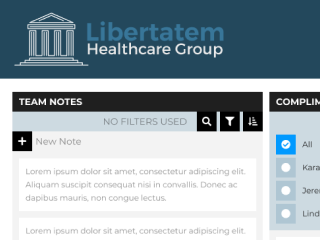 The system had deep information, but that needed to be surfaced better to Care Administrators.
The system had deep information, but that needed to be surfaced better to Care Administrators.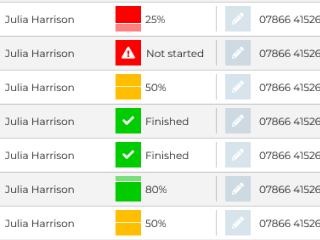 A layout with the most useful information presented in a clearer fashion.
A layout with the most useful information presented in a clearer fashion.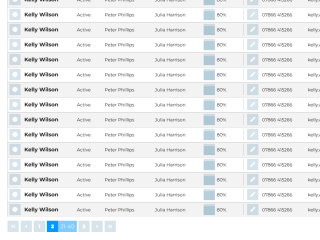 A layout with the ability to be flexible to screen size.
A layout with the ability to be flexible to screen size.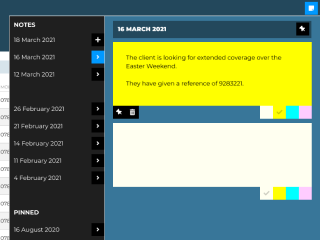 A newly added tool to add notes, styled as Post-Its, to a patient record to prompt ad-hoc sharing to domain knowledge.
A newly added tool to add notes, styled as Post-Its, to a patient record to prompt ad-hoc sharing to domain knowledge.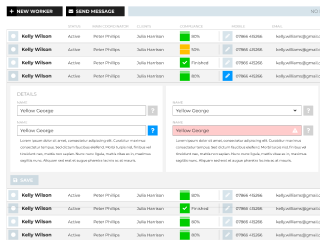 An interface that allows for powerful in-stu editing.
An interface that allows for powerful in-stu editing.
Note
Most of this work was done with a live system, and that system used live medical information, and because of confidentiality those screenshots and that information cannot be shown.
User Testing
Iterative development with a Focus Group of Care Administrators to ensure the application grew along with their domain experience, with KPIs established for the business to monitor to ensure the effectiveness of the application.
Features
- Improvements to the interface, to streamline workflow.
- New features, to give functionality where it is needed.
- New codebase, to allow for a reworking of the backend system.
Outcome
The relaunched system proved more useful for the three main groups.
- System Administrators found they were more able to perform their work, reporting that they found that they had between four to six extra hours in a week to deal with specific issues rather than technical problems.
- Healthcare Providers reported that they were losing fewer days to poor organisations, with most reporting that poor organisation was rare or very rare"
- Service Users reported an uptick in satisfaction to an estimated 7%.
Final Thoughts
When a project is limited in its resources, those resources are obviously best focused where the most effective results are.
To get the optimum effectiveness of client spend, it was best to concentrate on where marginal gains could be found on improving current systems, and create new systems for new functionality.
